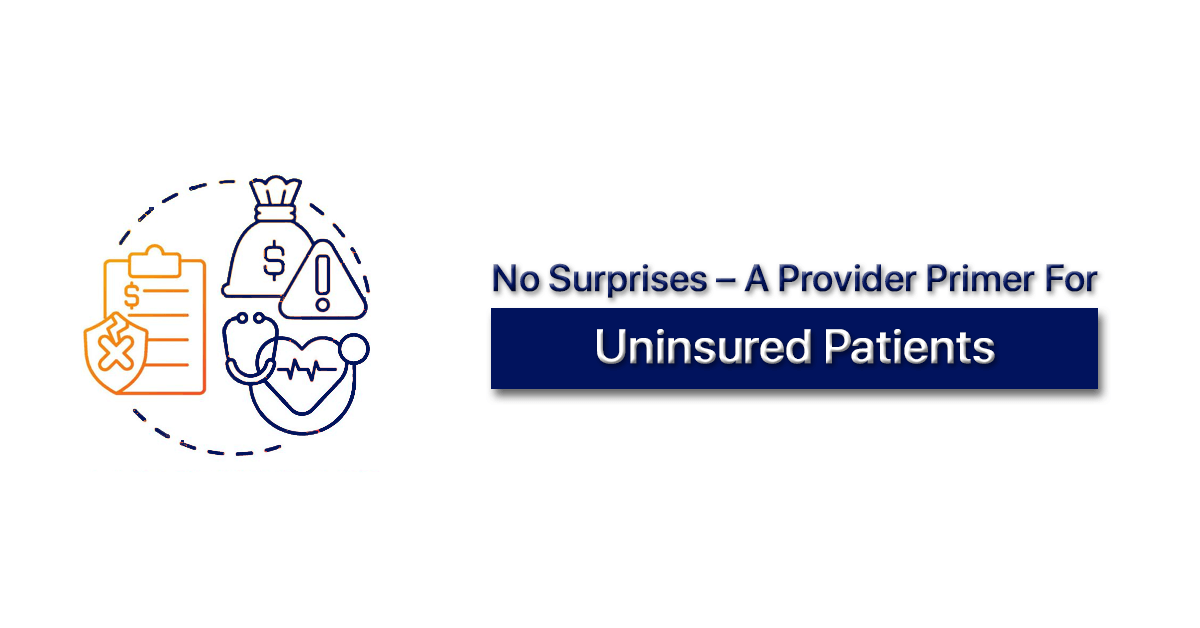Most providers understand the “No Surprises” requirements for insured patients. Effective as of Jan. 1, 2022, uninsured (or self-pay) consumers are also protected from unexpected high medical bills.
If a consumer doesn’t have health insurance or doesn’t plan to use insurance to pay for health care items or services, they must be given a “good faith estimate” of what they may be charged, before they get the item or service.
Once an uninsured patient schedules a visit, or with a health care provider or health care facility, that provider or facility must give them a good faith estimate of the amount it expects to charge for that item or service. A provider or facility must also give this good faith estimate when a consumer requests it (regardless of if they schedule the item or service).
There is a patient-provider dispute resolution process now available for uninsured patients who get a bill from a provider that’s at least $400 more than the expected charges on the good faith estimate.
Under the patient-provider dispute resolution process, an uninsured (or patient, or their authorized representative), may initiate the dispute process. This process brings in an independent third-party called a dispute resolution entity to determine the appropriate amount the consumer must pay.
If a consumer chooses to dispute a charge for an item or service, the provider will be asked to provide the following:
- The good faith estimate they provided their patient.
- The bill they sent to their patient.
- Any supporting documents that help to explain why the bill is higher than the estimate.
Providers will be emailed a link to the federal dispute resolution portal where they can upload the requested documents. The dispute resolution entity will contact the provider if any additional information is needed. Once a determination is made, the dispute resolution entity will notify the provider and the patient.
During the patient-provider dispute resolution process, the provider and patient can continue to negotiate the bill. During this process, providers:
- May not move the bill into collections or threaten to do so.
- Must pause collections if the bill is already in collections.
- Can’t collect late fees on unpaid amounts.
- Can’t threaten to take any retaliatory action against the patient for initiating the patient‑provider dispute resolution process.
If the provider and patient agree on a payment amount before the dispute resolution entity makes a determination, the provider must notify the dispute resolution entity as soon as possible, but no later than three days after the settlement.
For More Information: https://icd10monitor.medlearn.com/no-surprises-a-provider-primer-for-uninsured-patients/

